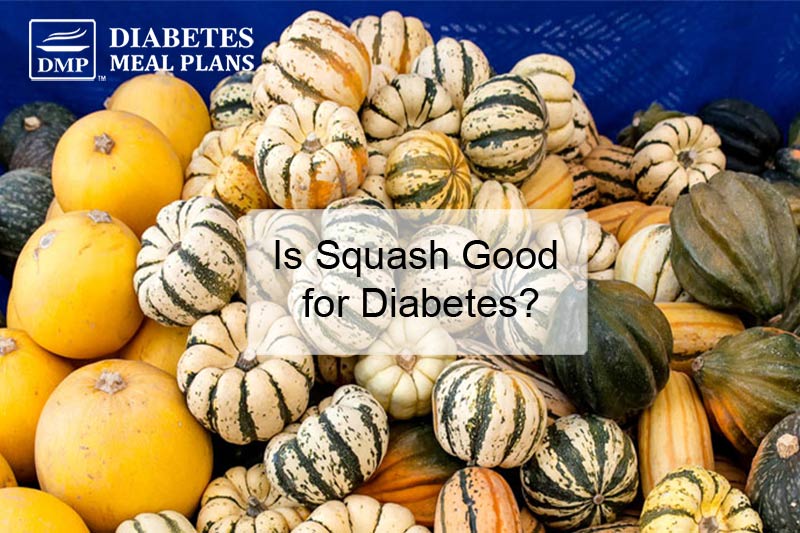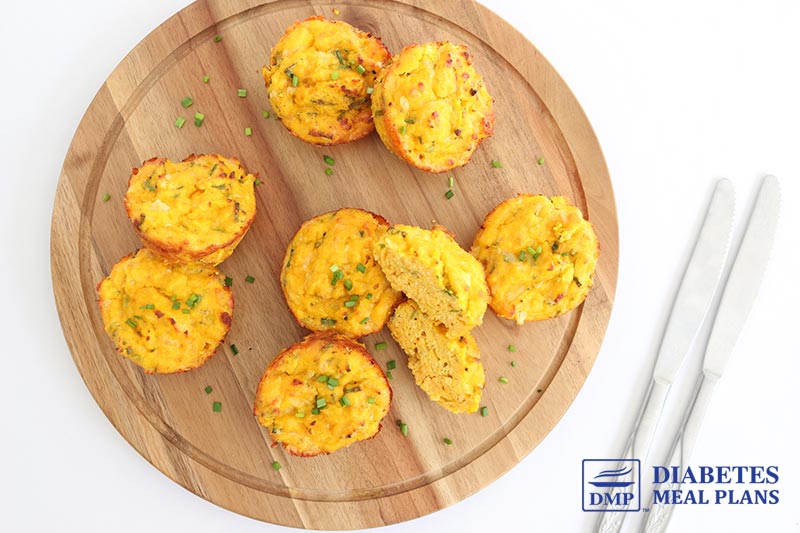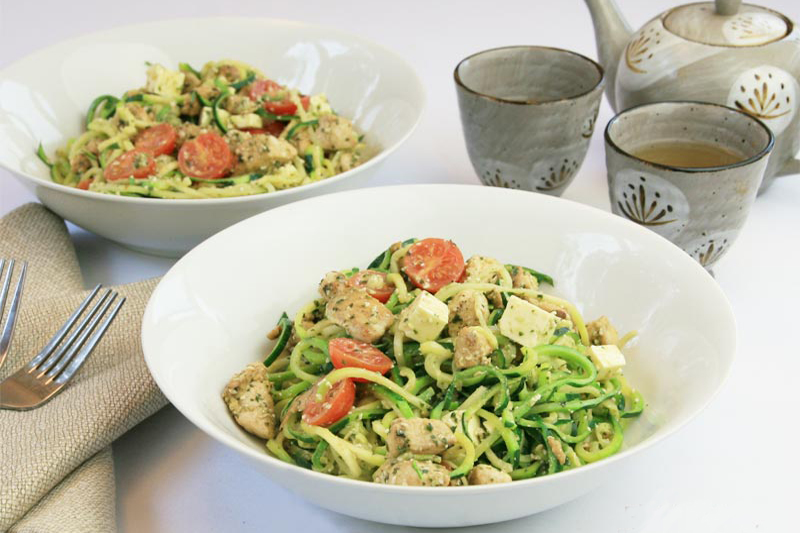From barrel-shaped pumpkins to yellow crooknecks, there are so many varieties of squash out there.
But are any squash low carb? And are all squash diabetic-friendly?
We’ve got answers (and fun recipes) headed your way.

What Are Squash?
We typically think of squash as vegetables, but they’re technically considered to be fruit! Squash grow on vines and have internal seeds, so a botanist would classify them as fruit.
In the culinary world, though, we call them vegetables, so that’s how we’ll refer to them here.
Squash are vegetables with soft, fleshy insides that can be cooked and prepared a variety of ways. There are hundreds of varieties of squash in existence today, but squash are thought to have origins in Mexico and Central America.
Some varieties have a thicker, firmer rind or “shell” on the outside. These “winter squash” are typically harvested in the fall.
You may be familiar with popular winter squash like the pear-shaped butternut squash, the acorn squash (appropriately named, given its acorn-like appearance), and of course, the beloved pumpkin!
“Summer squash” are thinner skinned and much softer on the outside.
Popular summer squash include the straight-shaped zucchini as well as the yellow crookneck squash that leans playfully to one side.
Squash Nutrition Facts
The nutrients and benefits of squash vary wildly depending on the type of squash as well as the part of the squash we’re talking about.

For example, pumpkin seeds aren’t the fleshy part of a squash, but boy, are they good for you!
A 1 oz (28g) serving contains 1.7g of fiber. Pumpkin seeds are also rich in vitamin K and minerals like magnesium, zinc, copper, and iron.
When talking about squash in general, most contain a good amount of vitamin C, A, and K. They also contain carotenoids, which are antioxidants responsible for the bright orange and yellow coloring found in many varieties.
As far as macronutrients go, some squash are pretty carb-heavy while others are a low-carb goldmine!
Let’s look at a standard, yellow, straight-neck squash first.
Nutrition Facts for 1/2 cup (100g) of yellow squash:
- Calories: 20
- Total Carbs: 4g
- Fiber: 2g
- Net Carbs: 2g
- Protein: 1g
- Fat: 0g
Squash are low in protein and fat, so let’s focus on carbs and fiber. How does the yellow summer squash compare to others?

Squash Nutrition Comparison Chart
You may notice on the chart below that summer squash tend to have fewer carbs than winter squash do.

Best Ways to Eat Squash for Diabetes
As you saw on the chart above, summer squash like zucchini are very low carb while butternut and acorn squash are less diabetes-friendly.
We encourage you to incorporate lots of low carb squash into your diet since those will have a more stabilizing effect on your blood sugar levels.
The higher carb squash aren’t totally off-limit, but we do suggest eating them less regularly and in smaller portions.
Now, here are some ideas on how to cook with squash…
Zucchini Noodles/Spaghetti
Pretty much everyone loves a good bowl of spaghetti, but finding low carb pasta alternatives can be a challenge.
If you want to branch out from standard low carb options like kelp and shirataki noodles, then give squash-based pasta a try!
Zucchini noodles (known as “zoodles”) are well-loved and have only a few grams of carbs per cup. You can buy pre-made zoodles from the frozen or refrigerator sections of the grocery store or you can easily cut your own from fresh zucchini.
Spaghetti squash is another good alternative. Just like the name implies, spaghetti squash is very similar to traditional spaghetti noodles (and almost indistinguishable from angel hair pasta).
This squash contains about 7-10g carbs per cup. They’re not as low carb as zucchini noodles are, but they sure beat whole wheat spaghetti at 40g of carbs per cup!
Spaghetti squash is easy to steam in the microwave and top with sauce for a low-maintenance meal.
Cheesy Butternut Squash Pizza
Squash like butternut or pumpkin tastes amazing on pizza!
Cook some cubed butternut squash in the oven for about 15 minutes. Make a low carb pizza crust, then make a base of yogurt, Parmesan and mozzarella cheese, thyme, and garlic to spread over the pizza base. Top with more mozzarella cheese and bake until golden.

Cheesy Pumpkin Puffs
Pumpkin lovers, get excited for this next one.
We’ve got a super simple, 5-ingredient recipe for you to try!

These sweet and savory cheesy pumpkin puffs make a delicious snack or meal.
There are lots of ways you can use squash, and it is a food you can safely enjoy without impacting blood sugar levels too much – enjoy!
Got questions about other diabetes safe foods? Download our food list below – includes recipes too!


Leave a Reply